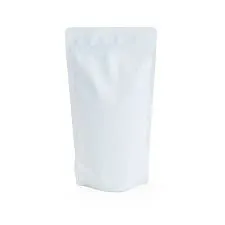- Afrikaans
- Albanian
- Amharic
- Arabic
- Armenian
- Azerbaijani
- Basque
- Belarusian
- Bengali
- Bosnian
- Bulgarian
- Catalan
- Cebuano
- chinese_simplified
- chinese_traditional
- Corsican
- Croatian
- Czech
- Danish
- Dutch
- English
- Esperanto
- Estonian
- Finnish
- French
- Frisian
- Galician
- Georgian
- German
- Greek
- Gujarati
- haitian_creole
- hausa
- hawaiian
- Hebrew
- Hindi
- Miao
- Hungarian
- Icelandic
- igbo
- Indonesian
- irish
- Italian
- Japanese
- Javanese
- Kannada
- kazakh
- Khmer
- Rwandese
- Korean
- Kurdish
- Kyrgyz
- Lao
- Latin
- Latvian
- Lithuanian
- Luxembourgish
- Macedonian
- Malgashi
- Malay
- Malayalam
- Maltese
- Maori
- Marathi
- Mongolian
- Myanmar
- Nepali
- Norwegian
- Norwegian
- Occitan
- Pashto
- Persian
- Polish
- Portuguese
- Punjabi
- Romanian
- Russian
- Samoan
- scottish-gaelic
- Serbian
- Sesotho
- Shona
- Sindhi
- Sinhala
- Slovak
- Slovenian
- Somali
- Spanish
- Sundanese
- Swahili
- Swedish
- Tagalog
- Tajik
- Tamil
- Tatar
- Telugu
- Thai
- Turkish
- Turkmen
- Ukrainian
- Urdu
- Uighur
- Uzbek
- Vietnamese
- Welsh
- Bantu
- Yiddish
- Yoruba
- Zulu
Effective Ways to Make Your Bag Odor-Proof for Maximum Discretion
How to Smell Proof a Bag A Comprehensive Guide
In today's world, where discretion is key, many individuals seek ways to keep their belongings safe and confidential. Whether you are trying to mask the smell of certain items for personal reasons, transporting food, or just want to maintain privacy, smell-proofing your bag can be an essential skill. Here’s a comprehensive guide on how to effectively smell-proof a bag.
Understanding Smell-Proofing
Before diving into the methods, it’s essential to understand what smell-proofing means. Essentially, it involves taking steps to contain odors within a bag so that they don’t escape and reach the outside environment. This can be particularly useful for those transporting items with strong odors, such as herbs, food, or other personal belongings.
Choosing the Right Bag
The first step in smell-proofing is selecting the right type of bag. While any bag can be smell-proofed, some materials are better suited for the job than others. Look for bags made from thick, durable materials like nylon, polyester, or canvas. These materials tend to be more resistant to odor permeation. More specialized options include vacuum-sealed bags or those specifically marketed as “smell-proof” – brimming with features designed to keep odors contained.
Using Odor-Absorbing Materials
To enhance the smell-proofing effect, consider including odor-absorbing materials in your bag. Activated charcoal is a popular choice, as it absorbs odors effectively. You can buy activated charcoal bags or make your own by placing activated charcoal in a breathable fabric pouch. Additionally, baking soda is another excellent odor absorber – simply put some in a small container and place it inside your bag.
Sealing Techniques
how to smell proof a bag

The next step is sealing your items effectively. Utilizing airtight containers is critical. Glass jars with airtight lids or vacuum-sealable bags prevent the escape of odors. If you're using a regular plastic bag, try to squeeze out as much air as possible before sealing it. This not only minimizes odor escape but also reduces the overall volume of your items.
Linings and Seals
If you’re serious about smell-proofing, consider adding a layer of fabric lining within your bag. Some people use silicone or rubber linings because these materials can provide an additional barrier against odors. However, they can make the bag less flexible. If you opt for fabric, towels or other absorbent materials can also help contain smells while offering easy cleaning.
Be Mindful of Temperature
Temperature can affect how odors are emitted. Warmer environments tend to amplify smells, while cooler temperatures can diminish them. When transporting items that may emit odors, try to keep your bag in a cool environment. This is particularly relevant if you're carrying food items that could spoil or get smelly if left in the heat.
Regular Maintenance
To keep your bag odor-free, regular cleaning and maintenance are crucial. If the bag is washable, make sure to do so frequently. For bags that can't be washed, using disinfecting wipes or fabric fresheners can keep the odors in check. Consider placing a dryer sheet or scented sachets inside your bag to help maintain a pleasant scent.
Conclusion
Smell-proofing a bag may seem like a daunting task, but with the right techniques and materials, it can be quite simple. From choosing an appropriate bag to utilizing odor-absorbing materials and sealing techniques, maintaining discretion is entirely possible. Whether for personal use, transporting food, or preserving privacy, mastering the art of smell-proofing your bag will undoubtedly serve you well. With these strategies in place, you can confidently carry your belongings without worrying about unintended odors making an escape.













